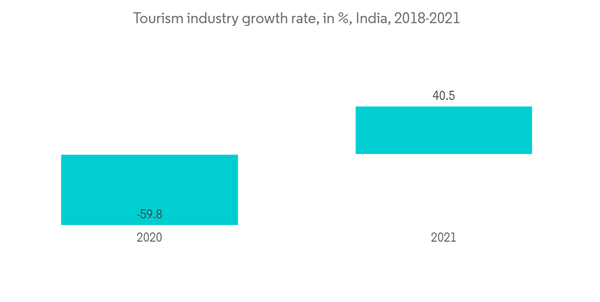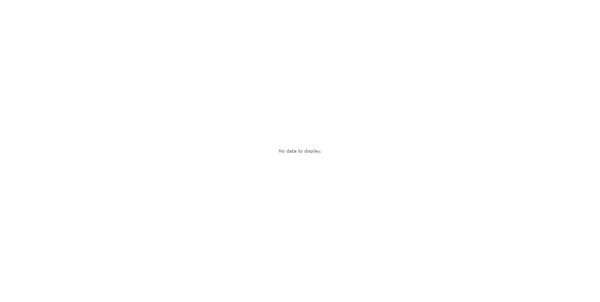The India steam room market is expected to register a CAGR of 3.5% during the forecast period.
Millennials' disposable income, purchasing power, and spending patterns have altered drastically in the last few years. Purchasing behavior and patterns evolved as a result of urbanization and lifestyle changes. Their way of life is oriented toward social wellness, supported by increased spending due to higher incomes. This generation considers steam bathing to be a necessity. As a result, millennials are more eager to spend money on it, fueling the expansion of this industry.
COVID-19 hurt the Indian steam room market due to the rapid shutdown and spread of the illness. Because of several health issues with steam rooms, the industry witnessed a declining trend. Other industries linked to these markets were also impacted indirectly. Since individuals began to focus on their health, market growth in the post-COVID-19 period has expanded.
Rapid urbanization, sedentary lifestyles, and stressful schedules of working people are causing severe health issues. To maintain and boost productivity, working professionals must be physically and psychologically fit. Furthermore, increased acceptance of steam room services, particularly among the elderly, is one of the reasons driving demand for spa services and, therefore, considerably contributing to market development.
Leisure tourism is the primary sector of the tourist business. Domestic and foreign travelers are enticed by places to spend official or vacation time by the leisure tourism and hospitality industries. These guests use services provided by hotels, luxury hotels, and resorts. In the leisure tourist and hospitality industries, steam room services are supplied as part of a package or as an amenity. As a result, the steam room market is now considered a significant section of the hospitality and tourist markets. The rise of the leisure tourism and hospitality industries is driving the market.
Millennials' disposable income, purchasing power, and spending patterns have altered drastically in the last few years. Purchasing behavior and patterns evolved as a result of urbanization and lifestyle changes. Their way of life is oriented toward social wellness, supported by increased spending due to higher incomes. This generation considers steam bathing to be a necessity. As a result, millennials are more eager to spend money on it, fueling the expansion of this industry.
COVID-19 hurt the Indian steam room market due to the rapid shutdown and spread of the illness. Because of several health issues with steam rooms, the industry witnessed a declining trend. Other industries linked to these markets were also impacted indirectly. Since individuals began to focus on their health, market growth in the post-COVID-19 period has expanded.
Rapid urbanization, sedentary lifestyles, and stressful schedules of working people are causing severe health issues. To maintain and boost productivity, working professionals must be physically and psychologically fit. Furthermore, increased acceptance of steam room services, particularly among the elderly, is one of the reasons driving demand for spa services and, therefore, considerably contributing to market development.
India Steam Rooms Market Trends
Growth in Tourism is Driving the Indian Steam Room Market
Travel and tourism are the largest industries in India, with a total contribution of about USD 122 billion to the country’s GDP. Pre-COVID-19 tourism recorded 11 million foreign arrivals and over two billion domestic visitors. The Indian travel market is primarily made up of hotels and airlines. Over 40% of travel in the country came from the hotel market.Leisure tourism is the primary sector of the tourist business. Domestic and foreign travelers are enticed by places to spend official or vacation time by the leisure tourism and hospitality industries. These guests use services provided by hotels, luxury hotels, and resorts. In the leisure tourist and hospitality industries, steam room services are supplied as part of a package or as an amenity. As a result, the steam room market is now considered a significant section of the hospitality and tourist markets. The rise of the leisure tourism and hospitality industries is driving the market.
Growing Interest in Health Benefits of Steam Room Fueling the Sales
Steam bathing is an ancient technique used in many civilizations around the world. Steam baths and hot springs were famous among the ancient Greeks and Romans. Steam and sweat were also employed as health techniques by indigenous peoples. Steam rooms provide unique health advantages such as clearing congestion, improving skin health, lowering blood pressure, improving circulation, alleviating bronchitis symptoms, workout recovery, relaxation, and reducing joint stiffness.India Steam Rooms Market Competitor Analysis
The report covers prominent players operating in the Indian steam room market. In terms of market share, few significant players currently dominate the market. However, with technological advancement and service innovation, domestic to international companies are increasing their market presence by securing new contracts and tapping new markets. A few major players include Kohler, Woven Gold India, Orion Bathing Concepts, and Steam Smith Systems.Additional Benefits:
- The market estimate (ME) sheet in Excel format
- 3 months of analyst support
Table of Contents
1 INTRODUCTION
4 MARKET DYNAMICS AND INSIGHTS
5 MARKET SEGMENTATION
6 COMPETITIVE LANDSCAPE
Companies Mentioned (Partial List)
A selection of companies mentioned in this report includes, but is not limited to:
- Steam Smith Systems
- Kohler
- Woven Gold India
- Quantum Solutions India
- Orion Bathing Concepts
- Omega Bath Solutions
- Hi tech Bath Solutions
- Bath Systems India
- Steamers India
- Potent Water Care
Methodology

LOADING...










